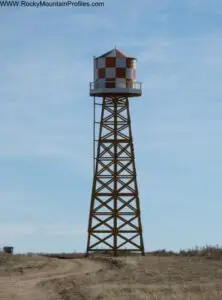Amache Colorado Ghost town
This was the second time I had been to Amache. For some reason, the first time I could not seem to want to get the camera out and take pictures. This time I decided to snap a few. Mixed emotions kept running through my mind. Some people see this site as one of Colorado’s worst atrocities. Others as a memorial to a group of people that rose above the situation. I prefer the later.
Was it the right thing? Who really knows? How amazing the people must have been to live in this place and still remain positive. How do you build a new life from scratch? Starting among the dry plains of Colorado. How do you start when everything was taken from you and you were brought here with nothing? A bare light bulb, a cot for a bed, a couple blankets and a coal fire furnace for heat is what you have now. Meals will be served in the mess hall.
What struck me most was the efforts people put forth and results these people accomplished during their short time in what can be called a concentration camp. Police force, fire department, medical services, agriculture, schools, retail stores, Koi ponds, post office, Sports leagues, religious centers, adult education, newspapers, they basically developed a community that supported all the residents.
They used what they called a Community Government with a council and representatives from the 29 blocks. These blocks were also divided into five districts with a councilman from each district. Their duties were to establish regulations, rules, ordinances and the laws that would govern the camp. They even had their own judicial system to hear and try cases centering around violations of the local regulations.
It is Ironic that while the Japanese were imprisoned many Japanese young people volunteered for military service.
Background-
Following the attack on Pearl Harbor and the subsequent declaration of war against Japan many Americans believed that the Japanese-Americans were spies or traitors. In fact, very few Japanese Americans were disloyal but the hysteria revolving around the war led President Franklin D. Roosevelt to issue Executive Order 9066, which authorized the Secretary of War to set up military areas where Japanese-Americans from the West Coast would be sent until their loyalty was proven and they could work and live outside the camps. Evacuees were first sent to assembly centers in California, Arizona, Washington and Oregon. People with as little as 1/16 Japanese blood could be sent to these centers. The Japanese-Americans had as little as 6 days’ notification to dispose of most of their property and possessions before they were transported. Many were forced to sell property at well under market value while assets of the Japanese immigrants were frozen leaving them with few possessions or savings. The federal government then transferred these internees further in-land to such camps as one near Granada, Colorado. It was located 140 miles east of Pueblo in southeastern Colorado. Since the postal designation for the camp was “Amache” it was called both “Granada” and “Amache”. It was in operation by August of 1942 and officially closed October 15, 1945. At its maximum population it held 7,318 people. At the time it was the tenth largest city in Colorado.
If you want a small challenge, see if you can find the deer in the photos??? Not the herd but the single deer.




